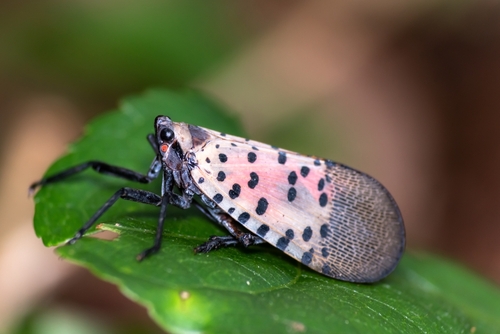Invasive species are causing serious concern as continued erratic weather conditions are allowing certain pests to increase their territory across the U.S. To help protect food, property, and health in the areas these pests invade, the National Pest Management Association (NPMA) is sharing key information and prevention tips for five invasive pests causing trouble throughout the country.

“Without natural predators in their environment, invasive pest populations can easily get out of hand,” said Dr. Jim Fredericks, senior vice president of public affairs at NPMA. “If you suspect an invasive pest infestation in or around your home [or business] immediately contact a pest control professional. A trained professional can identify the species, make control recommendations, and contact that appropriate authority if necessary.”
Invasive pests are not only a nuisance, but some are also capable of damaging property and transmitting dangerous disease. According to a new survey from NPMA conducted online by The Harris Poll, nearly 1 in 5 (18%) Americans have found invasive pests in their home and 17% are concerned about the threats posed by invasive species.
The NPMA issued warnings about these five invasive pests:
Brown Marmorated Stink Bugs: First arriving in the U.S. in 1996, brown marmorated stink bugs are now found in 44 states and are known for the pungent odor they release when crushed. Unlike native stink bugs, this one seeks refuge inside buildings to survive cold winter weather, often in extremely large numbers. To keep this bug out of your home or business, patch holes in door and window screens and vacuum up any bugs found inside the property. Learn more here.
Asian Tiger Mosquito: The Asian tiger mosquito entered the U.S. in the mid-1980’s in shipments of used tires and has since spread to more than 25 states. Asian tiger mosquitoes prefer to breed in containers that are often found around human dwellings. This aggressive, daytime-biting insect can transmit harmful diseases like Eastern Equine Encephalitis (EEE), West Nile virus, Chikungunya, dengue fever, and Zika virus. Learn more here.
Formosan Termites: Referred to as “super termites,” Formosan termites are the most destructive and aggressive of the over 2,000 species known to science. These invasive and hungry pests are found throughout the southern U.S., so residents living in this area are encouraged to schedule an annual termite inspection to protect their property. Learn more here.
Spotted Lanternflies: A relatively new invasive species to the U.S. that’s taking social media and news reports by storm lately, spotted lanternflies are a significant threat to agriculture throughout the areas they invade because they feed on the sap within many trees and plants. In infested areas, large populations of this pest can sometimes aggregate on buildings or shrubs. People are encouraged to help stop the spread of spotted lanternflies by squishing the bugs, as well as checking cars and any outdoor equipment for egg masses and removing them before traveling. Learn more here.
Asian Longhorned Ticks: Asian longhorned ticks, which have been found in aggregations of thousands of individuals, were first spotted in the U.S. in 2017 and have since been found in 16 states. With warmer-than-normal temperatures allowing tick populations to remain active into the fall, it’s important to perform thorough tick checks after spending time outdoors. Learn more here.
ALSO READ: How to Launch an Integrated Pest Management Program
